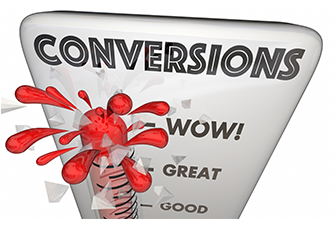How to Reduce Bounce Rates and Improve Conversion Rates

The amount of time that people spend on your site is a key metric for determining if they are interested in what you have to offer. A high bounce rate means that visitors only spend less than 30 seconds before leaving, and this could be because they weren’t satisfied with your content or found it difficult to navigate. If you want to improve conversion rates and reduce the number of bounces, below you will find some quick fixes to improve your website design.
What’s a Bounce Rate?
A bounce rate is a key metric used to measure traffic on your site. It calculates what percentage of visitors view only one page before leaving or closing the window without any other interaction with your website.
When you’re first starting out, it’s important to have high traffic in order for Google and other search engines to identify and rank you on their results pages.
However, if you have a high bounce rate it means that you’re driving traffic to your website but people aren’t sticking around long enough to read your articles or look around your site for very long.
What’s a Reasonable Bounce Rate?

Your bounce rate depends entirely on your industry and the type of website you have. If you fall into a highly competitive market and your site is newer, then a high bounce rate would be expected.
If you’re in an industry with low competition and desire more traffic to generate leads, a lower or negligible bounce rate is ideal.
However, the average ecommerce site has a bounce rate of 60.76%. On the other hand, B2B sites have an average bounce rate of 50.96%.
What Causes High Bounce Rates?
There are several factors that can cause a high bounce rate, including:
- Poor design
- Slow loading times
- Pushy advertising
- Lack of compelling content
What you can do to improve your bounce rate is to not just focus on design, speed and useful content. While these are important factors in making people want to stay on your website, it’s also good to try and guide them through the process of converting into a customer.
How to Improve Your Bounce Rate?

Avoiding these bounce rate-reducing techniques is detrimental to your website. Implement them immediately!
Mobile-Friendly Design: Mobile-friendly design means that people can view your site whether they are using smartphones or tablets, at any screen resolution, and with any bandwidth limitations. This is critical for reaching the maximum number of people and keeping them interested in your website.
Fast Loading Times: When your site takes too long to load, this will annoy visitors. More than half (56%) of online shoppers expect a web page to load in under 2 seconds. Anything longer and you risk losing your viewers’ attention. Incorporating technologies like HTTP/2 will greatly improve your website’s speed and make it much less of a burden on mobile users.
Powerful, Informative, and Adaptive Content: Visitors to your site should be able to find the information they need quickly and easily, or they will bounce off and look elsewhere. When writing content for each page, keep in mind the goal of making it easier for visitors to find what they are looking for. They should be able to answer their questions right away and not have to search for the information.
Mobile Advertising: If you use mobile advertising, then this needs to be formatted in a way that doesn’t obstruct people’s view or screen when they’re browsing your site on their phones. People expect ads to be annoying and intrusive, so if you want them to stick around on your site, then make sure that the advertising is easily ignored.
Useful Content: When attempting to reduce bounce rates, each page should have a unique purpose with useful content that is relevant and not written just for SEO purposes. This means reducing the number of words you use, especially unnecessary filler words and phrases that don’t add anything to the value of the text. People want to find useful information quickly and they’re not going to bother with a website that is peppered with “likes” or odd sentence structures where it’s difficult to determine what the article is about.
So what’s the bottom line?
Bounce rates are important because they indicate how well your website is converting visitors into customers. By implementing techniques that reduce bounces, you can boost your conversions and receive more qualified leads from each individual visitor.
Do you require assistance in determining the basic issues with your website, and then proposing solutions to enhance conversions? Do you need website design services to fill in the gaps with interesting assets that entice, persuade, and convert? Or, does your existing website require a revamp to make it more customer-friendly? We can help!
We are a reputed and experienced web design company, providing state-of-the-art website design and development services for small businesses to grow. Our experts can produce attractive and functional websites that help you stand out from the crowd!
